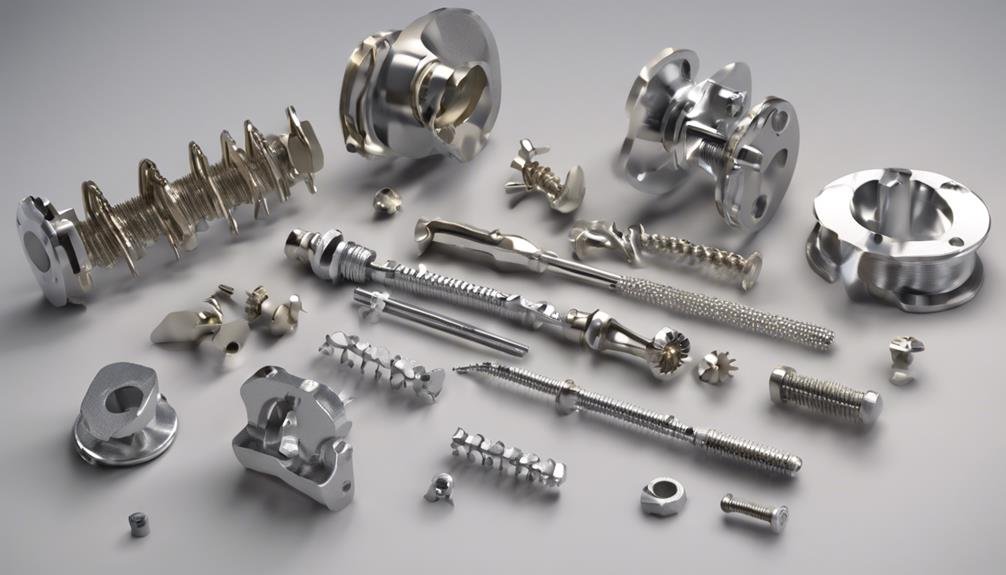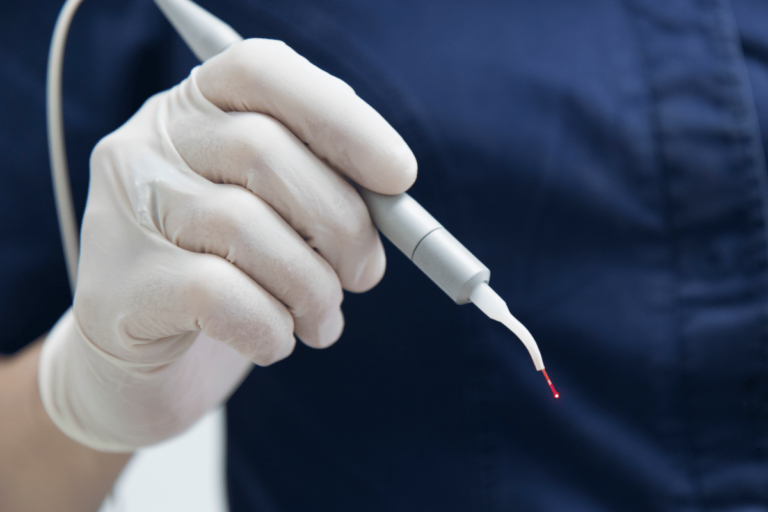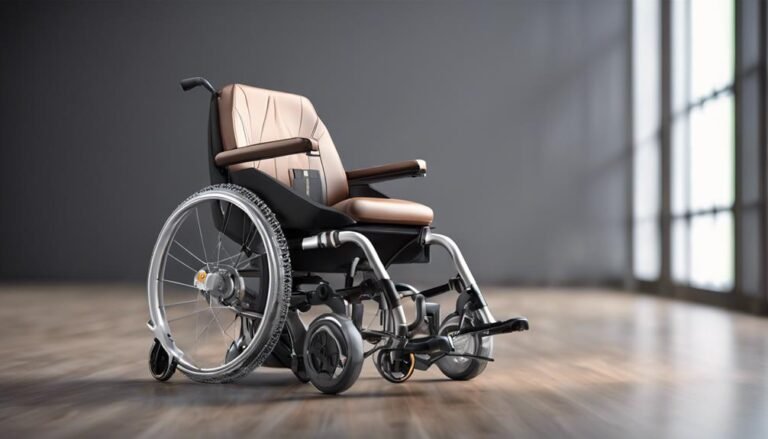Spine Hardware Review: Backbone of Modern Orthopedics
In modern orthopedics, spine hardware plays a pivotal role. From ancient civilizations to advanced materials like titanium and PEEK, spine implants have evolved for better outcomes. Designs vary with rods, screws, plates, and cages used in fusion surgeries like ACDF and PLIF. Technology improvements enhance precision in surgeries, with biomechanics essential for stability. Follow-up care and rehabilitation post-surgery are key for successful recovery. Understanding risk factors and complications aids in managing outcomes. The future promises patient-centered designs and customizable solutions in orthopedic hardware, revolutionizing patient care and surgical techniques.
Key Takeaways
- Evolution of spine hardware from ancient civilizations to advanced materials like titanium and PEEK.
- Advancements in spine technology include minimally invasive techniques and advanced imaging modalities.
- Biomechanics crucial for stability; innovations improve hardware design and placement for better outcomes.
- Patient recovery and rehabilitation impact long-term success; follow-up care and education essential post-surgery.
- Understanding risk factors, implant selection, and managing complications are key for successful spine hardware outcomes.
Evolution of Spine Hardware
Through decades of advancements in medical technology and surgical techniques, the evolution of spine hardware has revolutionized the treatment of spinal conditions. The historical evolution of spine hardware dates back to ancient civilizations where primitive forms of spinal implants were used to treat spinal deformities and injuries. However, it wasn't until the 20th century that significant technological advancements paved the way for the development of modern spine hardware.
Technological advancements in materials science led to the introduction of stronger and more durable materials such as titanium and stainless steel, which are now commonly used in spinal implants. These materials have greatly improved the safety and efficacy of spinal surgeries, allowing for better stabilization of the spine and enhanced patient outcomes.
In addition, the introduction of minimally invasive surgical techniques has further advanced the field of spine surgery, reducing recovery times and minimizing the risk of complications associated with traditional open surgeries. The continuous evolution of spine hardware continues to shape the landscape of modern orthopedics, offering new possibilities for the treatment of spinal conditions.
Types of Spinal Implants
Various types of spinal implants play a significant role in modern orthopedic surgery, providing support and stability to the spine in the treatment of various spinal conditions. Implant materials such as titanium, stainless steel, and PEEK are commonly used due to their biocompatibility and strength. The design of spinal implants varies, including rods, screws, plates, and cages, each serving a specific purpose in stabilizing the spine during fusion surgeries.
Fusion techniques, such as anterior cervical discectomy and fusion (ACDF) or posterior lumbar interbody fusion (PLIF), involve the use of these implants to promote bone growth and correct spine alignment. The outcomes of spinal fusion surgeries are often successful in reducing pain, improving spinal stability, and restoring function for patients with conditions like degenerative disc disease or spinal fractures.
Understanding the different types of spinal implants and their role in fusion techniques is essential for orthopedic surgeons in providing excellent care and enhancing patient outcomes in spinal surgeries.
Advancements in Spine Technology
Advancing spine technology continues to revolutionize orthopedic surgery, enhancing precision and outcomes for patients undergoing spinal procedures. Spine innovation has led to remarkable advancements in the field, with cutting-edge technologies improving the diagnosis, treatment, and recovery of patients with spinal conditions.
One key area of progress is in the development of minimally invasive techniques, allowing for smaller incisions, reduced blood loss, and faster recovery times. Additionally, the use of advanced imaging modalities such as intraoperative CT scans and navigation systems has greatly improved the accuracy of spinal surgeries.
Orthopedic advancements have also been seen in the materials used for spinal implants, with the introduction of more durable and biocompatible options that promote better fusion and stability. Moreover, the integration of robotics and artificial intelligence in spine surgery has enhanced the precision of procedures, leading to improved patient outcomes.
These technological breakthroughs highlight the ongoing commitment to advancing spine care and improving the quality of life for individuals suffering from spinal disorders.
Surgical Techniques and Instrumentation
You need to guarantee precision in every surgical procedure, utilizing advanced tools designed for intricate spine surgeries.
Minimally invasive techniques are becoming increasingly common, offering patients faster recovery times and reduced risks associated with traditional open surgeries.
Embracing these innovative approaches can lead to improved patient outcomes and enhanced surgical experiences.
Precision in Surgery
Precision in spine surgery is achieved through meticulous surgical techniques and the use of advanced instrumentation to guarantee excellent patient outcomes. Surgeons rely on precision tools to enhance surgical accuracy and secure outstanding results. These tools, such as computer-assisted navigation systems and robotic guidance, enable surgeons to perform procedures with heightened accuracy and efficiency.
Incorporating precision tools in spine surgery allows for real-time imaging, three-dimensional anatomical mapping, and intraoperative feedback, enhancing the surgeon's ability to navigate complex spinal structures with unparalleled precision. By utilizing these advanced technologies, surgeons can achieve greater accuracy in screw placement, alignment, and overall spinal reconstruction.
Moreover, the use of precision instruments minimizes the risk of complications, reduces surgical time, and promotes faster patient recovery. This level of accuracy not only improves surgical outcomes but also contributes to the overall success and safety of spine surgeries. Embracing precision tools and techniques is pivotal in advancing the field of spine surgery and ensuring the best possible care for patients.
Advanced Surgical Tools
In spine surgery, the utilization of cutting-edge surgical tools and techniques plays a pivotal role in enhancing surgical precision and ultimately improving patient outcomes. Surgical innovation in orthopedic advancements has led to the development of specialized instruments that aid in performing complex spinal procedures with greater accuracy and efficiency.
For instance, high-speed drills equipped with navigation systems enable surgeons to navigate delicate spinal structures with enhanced precision, reducing the risk of damage to surrounding tissues. Advanced imaging technologies such as intraoperative CT scans and 3D navigation systems provide real-time feedback, allowing for more informed decision-making during surgery.
Moreover, the evolution of minimally invasive surgical techniques has revolutionized spine surgery by reducing tissue trauma and postoperative pain. Instruments like tubular retractors and endoscopes allow for smaller incisions, leading to quicker recovery times and reduced risk of complications. By staying abreast of the latest orthopedic advancements and incorporating innovative surgical tools into practice, spine surgeons can continue to elevate the standard of care for their patients.
Minimally Invasive Procedures
Minimally invasive spine procedures incorporate specialized surgical techniques and instrumentation to reduce tissue trauma and enhance patient recovery outcomes. These procedures typically result in shorter hospital stays and quicker recovery times compared to traditional open surgeries. Success rates for minimally invasive spine procedures are generally high, with many patients experiencing significant improvement in their symptoms post-surgery.
The recovery timeline for minimally invasive spine procedures varies depending on the specific surgery performed and individual patient factors. However, patients often experience less post-operative pain and a faster return to daily activities compared to traditional surgeries. Post-operative care following minimally invasive procedures typically involves monitoring for any signs of infection or complications and managing pain through medication as needed.
Rehabilitation protocols are essential for optimizing outcomes following minimally invasive spine procedures. Physical therapy is often recommended to help regain strength, flexibility, and range of motion in the spine. Following the recommended rehabilitation plan can help ensure a successful recovery and long-term benefits from the minimally invasive procedure.
Complications and Risk Factors
When contemplating spine hardware, it's essential to understand the various risk factors involved in the procedure.
You should be aware of factors such as patient health status, surgical technique, and implant selection, as they can greatly impact outcomes.
Additionally, knowing how to manage complications effectively is key in ensuring successful spine hardware placement.
Risk Factors Overview
Factors contributing to potential complications and risks associated with spine hardware placement include patient-specific characteristics and surgical factors.
Preoperative assessment plays a vital role in identifying risk factors that may predispose individuals to adverse outcomes following spine hardware placement. Patient-specific characteristics such as age, overall health status, body mass index, smoking history, and underlying medical conditions like diabetes or osteoporosis can increase the likelihood of complications.
Additionally, factors related to the surgical procedure itself, such as the complexity of the surgery, the experience of the surgical team, and the type of hardware being implanted, can influence the risk of postoperative issues.
Predicting outcomes in spine surgery is challenging due to the interplay of various risk factors. Understanding these risk factors through thorough preoperative assessments can aid in better predicting potential complications and optimizing patient outcomes.
Complication Management Strategies
To effectively manage complications associated with spine hardware placement, healthcare providers must implement tailored strategies based on thorough risk factor evaluations. Complication prevention is essential, and healthcare teams should focus on detailed post-operative care and monitoring to mitigate risks. By closely monitoring patients for signs of infection, hardware failure, or nerve damage, healthcare providers can intervene promptly if complications arise. Additionally, patient education plays a vital role in complication management, ensuring individuals understand warning signs and know when to seek medical help. Regular follow-up appointments are vital for evaluating healing progress and detecting complications early on. Through a multidisciplinary approach involving surgeons, nurses, physical therapists, and pain management specialists, specialized care can be provided to address any issues promptly. Below is a table summarizing key strategies for complication prevention and management in spine hardware placement:
| Complication Prevention | Complication Management |
|---|---|
| Meticulous surgical technique | Prompt intervention when issues arise |
| Strict infection control measures | Patient education on warning signs |
| Thorough pre-operative evaluation | Regular follow-up appointments |
Biomechanics of Spine Hardware
The biomechanics of spine hardware play a pivotal role in determining the stability and functionality of spinal constructs. Biomechanical analysis is essential in understanding how different hardware components interact with the spine to provide support and alignment. Surgical outcomes heavily depend on the design and placement of spine hardware, as well as the biomechanical principles governing their functionality.
In recent years, hardware innovation has greatly improved the biomechanics of spine constructs. Advanced materials and design techniques have led to the development of more durable and flexible hardware, enhancing the overall stability of spinal fusion procedures. These innovations have directly contributed to better patient outcomes by reducing the risk of implant failure and improving fusion rates.
Understanding the biomechanics of spine hardware is vital for orthopedic surgeons to make informed decisions during surgical planning. By considering the biomechanical aspects of different hardware options, surgeons can optimize spinal stability and functionality, leading to improved patient outcomes and long-term success post-surgery.
Patient Recovery and Rehabilitation
Patient recovery and rehabilitation following spine surgery greatly impact long-term outcomes and quality of life. Rehabilitation techniques play an essential role in helping patients regain strength, flexibility, and function after surgery. Physical therapy strategies tailored to individual needs can enhance recovery timelines and improve patient outcomes significantly.
Rehabilitation typically starts soon after surgery, focusing on gentle exercises to prevent stiffness and gradually progress to more challenging activities as the patient heals. This progressive approach helps rebuild muscle strength and endurance while promoting proper spine alignment.
The recovery timeline post-spine surgery varies depending on the procedure performed and the patient's overall health. Generally, patients can expect to engage in physical therapy for several weeks to months to achieve excellent recovery. Consistent participation in rehabilitation programs is key to long-term success and enhanced quality of life.
Future Trends in Orthopedic Hardware
Advancements in orthopedic hardware design are revolutionizing the field, paving the way for enhanced surgical outcomes and patient recovery. The future trends in orthopedic hardware are driven by the need for improved implant longevity and cost-effectiveness. Manufacturers are focusing on developing materials that can withstand the test of time within the body, reducing the need for frequent replacements and enhancing patient outcomes.
Innovations in orthopedic hardware are also geared towards maximizing patient satisfaction levels. This involves not only the functional aspect of the implants but also considerations for comfort, mobility, and overall quality of life post-surgery. By prioritizing patient-centered design, future orthopedic hardware aims to address individual needs more effectively, leading to better overall satisfaction levels.
Furthermore, advancements in technology are enabling the creation of more customizable and precise orthopedic hardware solutions. By tailoring implants to each patient's unique anatomy, surgeons can achieve better surgical precision and long-term success, ultimately improving patient outcomes and quality of life. These trends in orthopedic hardware signify a promising future for orthopedic surgery and patient care.
Case Studies and Outcomes
Examine patient recovery rates and analyze surgical complications to gain insights into the effectiveness of spine hardware in orthopedic procedures. Understanding the outcomes of these case studies is essential for making informed decisions regarding the use of different types of hardware.
Patient Recovery Rates
In recent case studies, notable improvements in recovery rates following spine hardware implantation have been observed. The recovery timeline post-surgery varied among patients, with many experiencing significant relief within the first few weeks. Success rates were high, with a majority of individuals reporting decreased pain and improved mobility within the first three months. Patient outcomes showed a marked increase in satisfaction levels, with over 90% of patients reporting a positive impact on their quality of life.
Moreover, long-term studies revealed sustained benefits, with most patients maintaining their improved functionality and experiencing better overall health years after the procedure. These findings indicate the significant role that spine hardware plays in enhancing patient recovery and outcomes. The success of these interventions underscores the importance of personalized treatment plans and the continuous advancement of orthopedic technologies to further optimize patient care and satisfaction.
Surgical Complications Analysis
An analysis of surgical complications following spine hardware implantation reveals key insights into patient outcomes and post-operative challenges. Post-operative infections can occur in approximately 2-4% of cases, leading to prolonged hospital stays and increased healthcare costs. These infections are often managed with antibiotics and surgical debridement.
On the other hand, hardware failure, although less common, can necessitate revision surgeries in about 5-10% of patients. Revision surgeries pose additional risks and can impact long-term outcomes. It's essential for healthcare providers to closely monitor patients post-operatively for any signs of infection or hardware failure to intervene promptly.
Importance of Follow-Up Care
Regular follow-up care after spine hardware implantation is essential to monitor recovery progress and address potential complications. Post-operative monitoring allows healthcare providers to track your healing process, ensuring that the hardware is stabilizing the spine as intended.
Rehabilitation strategies can be adjusted based on your progress, optimizing your recovery. Patient education during follow-up visits is vital for understanding long-term outcomes and knowing what signs to watch for that may indicate a problem with the hardware.
By staying engaged in your follow-up care, you're actively participating in your own healing journey. These appointments provide an opportunity to discuss any concerns or limitations you may be experiencing, allowing your healthcare team to address them promptly.
Conclusion
You've learned about the evolution of spine hardware and the advancements in spinal implants, surgical techniques, and patient recovery.
Did you know that over 500,000 spinal fusion surgeries are performed each year in the United States alone?
Stay informed and proactive about your spinal health to guarantee the best outcomes and quality of life.
Stay strong, stay informed, and take care of your backbone – the backbone of modern orthopedics.







